
MUSIC OF THE IMAGINATION WITH THOMAS ADÈS
11-12 April 2024






Thursday 11 April, 7.30pm, The Queen's Hall, Edinburgh
Friday 12 April, 7.30pm, City Halls, Glasgow
HAYDN Symphony No 64 ‘Tempora Mutantur’
WOOLRICH The Theatre Represents a Garden: Night
MOZART Concert Aria: Vorrei spiegarvi, oh Dio
Interval of 20 minutes
ADÈS The Origin of the Harp (New version for orchestra – World Premiere)
Commissioned by the Scottish Chamber Orchestra
WEIR Heroic Strokes of the Bow
BEETHOVEN Creatures of Prometheus – Overture, Adagio and Finale
Thomas Adès Conductor
Emma Posman Soprano


Posman
4 Royal Terrace, Edinburgh EH7 5AB +44 (0)131 557 6800 | info@sco.org.uk | sco.org.uk
The Scottish Chamber Orchestra is a charity registered in Scotland No. SC015039. Company registration No. SC075079.
Our Principal Conductor’s Circle are a special part of our musical family. Their commitment and generosity benefit us all – musicians, audiences and creative learning participants alike.
Annual Fund
James and Patricia Cook
Visiting Artists Fund
Colin and Sue Buchan
Harry and Carol Nimmo
Anne and Matthew Richards
International Touring Fund
Gavin and Kate Gemmell
Creative Learning Fund
Sabine and Brian Thomson
CHAIR SPONSORS
Conductor Emeritus Joseph Swensen
Donald and Louise MacDonald
Chorus Director Gregory Batsleer
Anne McFarlane
Principal Second Violin
Marcus Barcham Stevens
Jo and Alison Elliot
Second Violin Rachel Smith
J Douglas Home
Principal Viola Max Mandel
Ken Barker and Martha Vail Barker
Viola Brian Schiele
Christine Lessels
Viola Steve King
Sir Ewan and Lady Brown
Principal Cello Philip Higham
The Thomas Family
American Development Fund
Erik Lars Hansen and Vanessa C L Chang
Productions Fund
Bill and Celia Carman
Anny and Bobby White
Anne, Tom and Natalie Usher
Scottish Touring Fund
Eriadne and George Mackintosh
Claire and Anthony Tait
Cello Donald Gillan
Professor Sue Lightman
Cello Eric de Wit
Jasmine Macquaker Charitable Fund
Principal Double Bass Nikita Naumov
Caroline Hahn and Richard Neville-Towle
Principal Flute André Cebrián
Claire and Mark Urquhart
Principal Oboe Robin Williams
In memory of Hedley G Wright
Principal Clarinet Maximiliano Martín
Stuart and Alison Paul
Principal Bassoon Cerys Ambrose-Evans
Claire and Anthony Tait
Principal Timpani Louise Lewis Goodwin
Geoff and Mary Ball

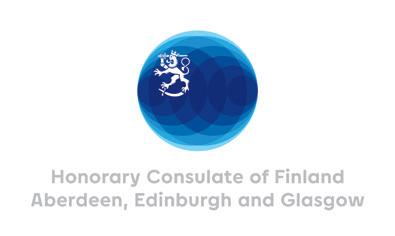




Diamond
Malcolm and Avril Gourlay
John and Jane Griffiths
James and Felicity Ivory
Robin and Catherine Parbrook
Clair and Vincent Ryan
William Samuel
Tom and Natalie Usher
Platinum
David Caldwell in memory of Ann
Judith and David Halkerston
J Douglas Home
Audrey Hopkins
David and Elizabeth Hudson
Dr and Mrs Peter Jackson
Dr Daniel Lamont
Chris and Gill Masters
Duncan and Una McGhie
Anne-Marie McQueen
James F Muirhead
Patrick and Susan Prenter
Mr and Mrs J Reid
George Ritchie
Martin and Mairi Ritchie
Hilary E Ross
Elaine Ross
George Rubienski
Jill and Brian Sandford
Michael and Elizabeth Sudlow
Robert and Elizabeth Turcan
Alan and Sue Warner
Finlay and Lynn Williamson
Dr Peter Williamson and Ms Margaret Duffy
Ruth Woodburn
William Zachs
Gold
John and Maggie Bolton
Kate Calder
Lord Matthew Clarke
Jo and Christine Danbolt
James and Caroline Denison-Pender
Andrew and Kirsty Desson
David and Sheila Ferrier
Chris and Claire Fletcher
Dr J W E Forrester
James Friend
Adam Gaines and Joanna Baker
Margaret Green
Iain Gow
Christopher and Kathleen Haddow
Catherine Johnstone
Gordon Kirk
Robert Mackay and Philip Whitley
Mike and Karen Mair
Anne McAlister and Philip Sawyer
Roy and Svend McEwan-Brown
John and Liz Murphy
Maggie Peatfield
Charles Platt
Alison and Stephen Rawles
Andrew Robinson
Olivia Robinson
Irene Smith
Ian S Swanson
John-Paul and Joanna Temperley
James Wastle and Glenn Craig
Bill Welsh
Catherine Wilson
Neil and Philippa Woodcock
G M Wright
Bruce and Lynda Wyer
Silver
Roy Alexander
Pamela Andrews and Alan Norton
Dr Peter Armit
William Armstrong
Fiona and Neil Ballantyne
Timothy Barnes and Janet Sidaway
The Batsleer Family
Jack Bogle
Jane Borland
Alan Borthwick
Michael and Jane Boyle
Mary Brady
Elizabeth Brittin
John Brownlie
Laura Buist
Robert Burns
Sheila Colvin
Lorn and Camilla Cowie
Philip Croft and David Lipetz
Lord and Lady Cullen of Whitekirk
Adam and Lesley Cumming
Dr Wilma Dickson
Sylvia Dow
Dr and Mrs Alan Falconer
Sheila Ferguson
Malcolm Fleming
Dr William Irvine Fortescue
Dr David Grant
Andrew Hadden
J Martin Haldane
Ronnie and Ann Hanna
Ruth Hannah
Robin Harding
Roderick Hart
Norman Hazelton
Ron and Evelynne Hill
Philip Holman
Clephane Hume
Tim and Anna Ingold
David and Pamela Jenkins
Susannah Johnston and Jamie Weir
Julie and Julian Keanie
Marty Kehoe
Professor Christopher and Mrs Alison Kelnar
Dr and Mrs Ian Laing
Janey and Barrie Lambie
Graham and Elma Leisk
Geoff Lewis
Dorothy A Lunt
Vincent Macaulay
James McClure in memory of Robert Duncan
Gavin McCrone
Brian Miller
James and Helen Moir
Alistair Montgomerie
Margaret Mortimer and Ken Jobling
Andrew Murchison
Hugh and Gillian Nimmo
David and Tanya Parker
Hilary and Bruce Patrick
John Peutherer in memory of Audrey Peutherer
James S Potter
Alastair Reid
Fiona Reith
Catherine Steel
Ian Szymanski
Takashi and Mikako Taji
Douglas and Sandra Tweddle
C S Weir
We are indebted to everyone acknowledged here who gives philanthropic gifts to the SCO of £300 or greater each year, as well as those who prefer to remain anonymous.
We are also incredibly thankful to the many individuals not listed who are kind enough to support the Orchestra financially on a regular or ad hoc basis. Every single donation makes a difference.
Become a regular donor, from as little as £5 a month, by contacting Hannah Wilkinson on 0131 478 8364 or hannah.wilkinson@sco.org.uk.
“A crack musical team at the top of its game.”

HRH The Former Duke of Rothesay
Patron
Donald MacDonald CBE Life President
Joanna Baker CBE
Chair
Gavin Reid LVO
Chief Executive
Maxim Emelyanychev Principal Conductor
Joseph Swensen Conductor Emeritus
Gregory Batsleer Chorus Director
Jay Capperauld Associate Composer
Information correct at the time of going to print
First Violin
Maia Cabeza
Afonso Fesch
Agata Daraškaitė
Aisling O’Dea
Siún Milne
Fiona Alexander
Amira Bedrush-McDonald
Wen Wang
Second Violin
Gordon Bragg
Michelle Dierx
Stewart Webster
Tom Hankey
Niamh Lyons
Sian Holding
Viola
Max Mandel
Francesca Gilbert
Brian Schiele
Steve King
Cello
Philip Higham
Su-a Lee
Eric de Wit
Robert Anderson
Bass
Nikita Naumov
Genna Spinks
Flute
André Cebrián
Marta Gómez
Piccolo
Marta Gómez
Oboe
Robin Williams
Katherine Bryer
Cor Anglais
Katherine Bryer
Clarinet
Maximiliano Martín
William Stafford
Bass Clarinet
William Stafford
Bassoon
Cerys Ambrose-Evans
Alison Green
Max Mandel
Principal Viola
Contrabassoon
Alison Green
Horn
Ken Henderson
Gijs Laceulle
Trumpet
Peter Franks
Shaun Harrold
Timpani
Louise Lewis Goodwin
Percussion
Iain Sandilands
Colin Hyson
Harp
Eleanor Hudson
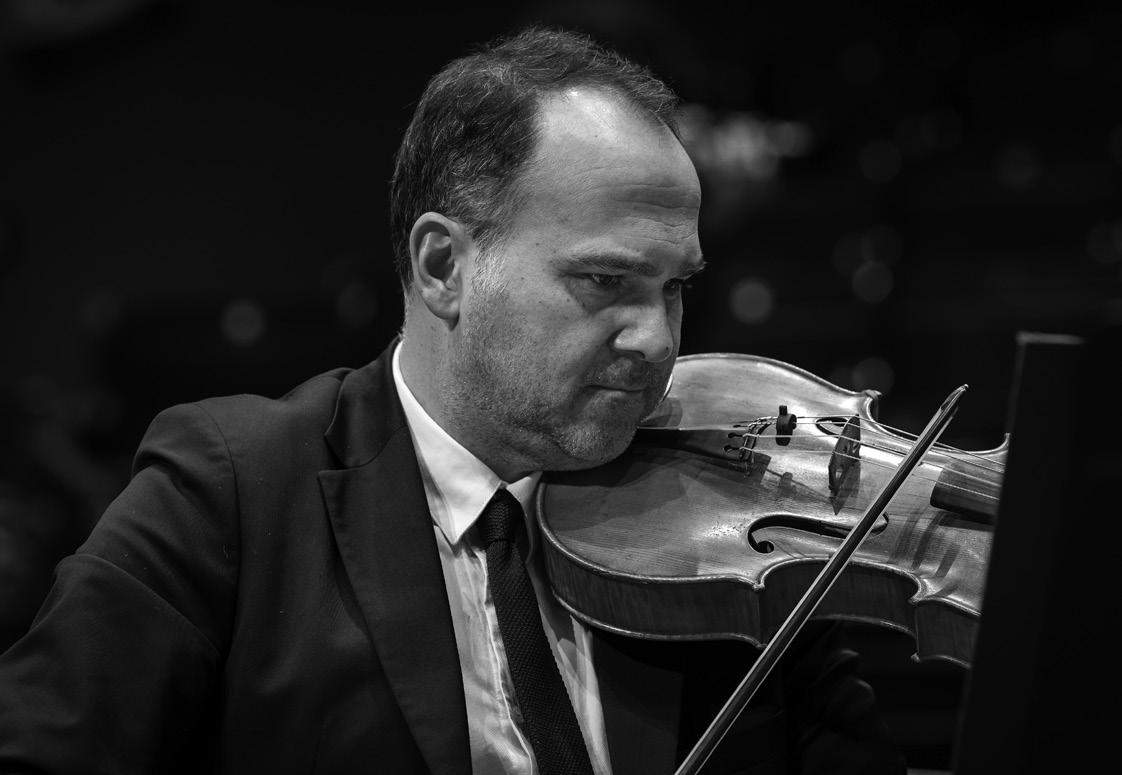
HAYDN (1732-1809)
Symphony No 64 ‘Tempora Mutantur’ (1773-75)
Allegro con spirito
Largo
Menuetto and Trio: Allegretto
Finale: Presto
WOOLRICH (b. 1954)
The Theatre Represents a Garden: Night (1991)
MOZART (1756-1791)
Concert Aria: Vorrei spiegarvi, oh Dio, K418 (1783)
Adagio - Allegro
ADÈS (b. 1971)
The Origin of the Harp (2024) (New version for orchestra – World Premiere)
Commissioned by the Scottish Chamber Orchestra
WEIR (b. 1954)
Heroic Strokes of the Bow (1992)
BEETHOVEN (1770-1827)
Creatures of Prometheus – Overture, Adagio and Finale (1801)
As its title suggests, there’s no shortage of imagination behind the music in tonight’s concert. But it’s imagination that’s fired up and propelled into action by – well, things that already exist. Let’s call them inspirations – maybe incomplete fragments of music, or paintings, or even an ancient mythical story of humankind’s first steps towards civilisation. Binding all of it together, however, is a notion of time, of artists casting their imaginations across centuries, and noting down the results.
And time is indeed very much the underlying theme behind tonight’s opening piece. Plenty of Haydn symphonies have titles – just think of the ‘Bear’, the ‘Hen’, the ‘Surprise’, the ‘Farewell’, and several others too. Those nicknames, however, weren’t Haydn’s own: they were added by publishers, listeners, or simply tradition, and intended to convey something perceived in the music (however accurate or otherwise that was).
No 64, however, is different. Its title – ‘Tempora mutantur’ – is very much Haydn’s own (it’s written into his surviving orchestral parts), and would have been a well-known adage in the composer’s time. It comes from the 1615 Epigrammata by English theologian and academic John Owen, and its full version goes like this:
Tempora mutantur, nos et mutamur in illis. Quomodo? Fit semper tempore peior homo.
It’s normally translated: The times change, and we change with them. How? Time passing makes mankind worse.
They’re hardly optimistic sentiments, so let’s stick with the opening line, and

the underlying idea of change. Haydn wrote the Symphony around 1773, a few years after having been promoted to the position of Music Director with the fabulously wealthy (and fantastically music-loving) Esterházy family. During the almost 30 years he devoted to the clan, he effectively laid down the traditions for symphonic form that are still with us today (even if they’ve been vastly transfigured over the intervening centuries). And he did so with a great deal of wit and humour, setting up expectations only to subvert them, or intentionally playing games with his listeners using false endings, harmonic sidesteps, and plenty more techniques.
In his Symphony No 64, however, he goes quite a bit further, and you might find the results quite enigmatic, even disorientating. Maybe that was the point. Times change, and we change with them: can we not expect a creative composer to want to shock us out of our comfortable familiarity once in a while?
In his Symphony No 64, however, he goes quite a bit further, and you might find the results quite enigmatic, even disorientating. Maybe that was the point. Times change, and we change with them.
With its whispered opening question and shouted response, Haydn’s first movement upsets expectations even from its very beginning. And in many ways, it’s a large-scale study in contrasts, between instrumental groups, types of material, loud and soft, even unusual harmonies. It’s in Haydn’s second movement, however, that we might begin to focus our thinking on time. Indeed, it’s been suggested that his ‘Tempora mutantur’ title refers most explicitly to this section of the Symphony. There’s been plenty of in-depth scholarship addressed to the second movement’s six or seven minutes of music, and they do indeed contain some of the strangest ideas Haydn ever created. The movement begins with a hushed, veiled string melody, but its flow is continually interrupted by brief silences, as though it’s not sure whether it should continue. Later, harmonies unexpectedly drop away, leaving melodies unadorned, or naked chords stand alone, apparently separated from what’s around them. In line with
Franz Joseph Haydn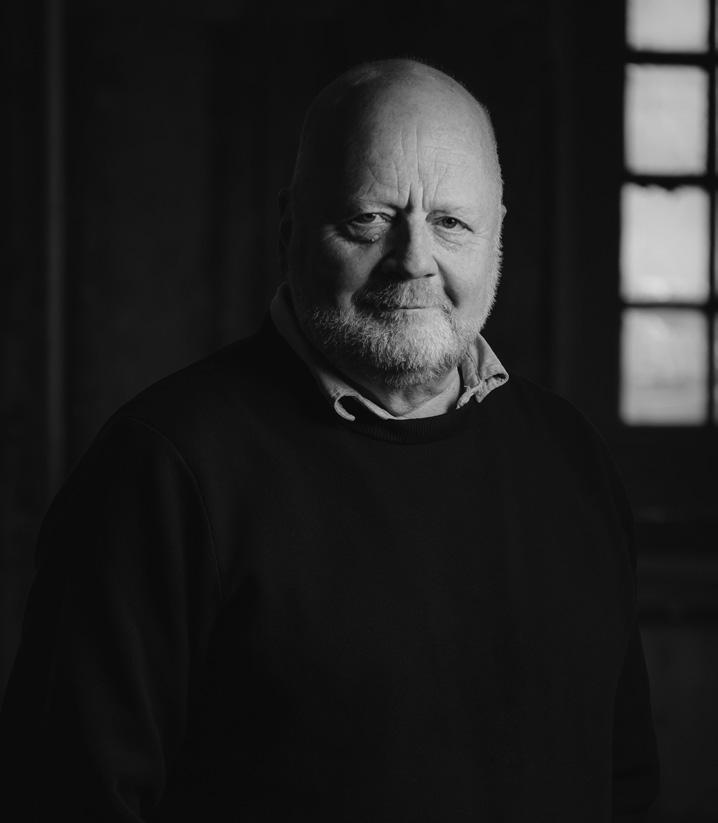
tradition, the opening string melody returns again and again, but to what end? The movement’s odd, inconclusive conclusion hints at greater darkness than its music itself conveys.
Things shift back far closer to expectations in Haydn’s closing movements, however. The third is a cheerful minuet and trio, full of short-long ‘Scotch snap’ rhythms, and horns and oboes take centre stage in its central trio section. The soft/loud contrasts return in Haydn’s finale, whose unbalanced six-bar phrases might prove slightly disconcerting – as might the music’s unexpected swerves sideways into stormy minor keys. But taken as a whole, the Symphony sets the tone perfectly for a concert of surprises, connections and fresh thinking.
There are moments in our next piece, John Woolrich’s T he Theatre Represents a Garden: Night , that might sound uncannily similar to the Haydn symphony we’ve just
"This necklace of fragments, transcriptions and recompositions is my little homage to the world’s greatest composer."
heard. Woolrich is an English composer, as well as a festival and ensemble founder (the man behind both Hoxton New Music Days and the Composers Ensemble), and an educator (as artistic director of the Dartington International Sumer School, and music professor at Brunel University). His music has sometimes focused on reaching back through the centuries and reimagining the works of earlier composers – in reworking a Monteverdi aria in Ulysses Awakes , for example, and also in tonight’s piece, written in 1991. Woolrich introduces the piece in his own programme note:
"This necklace of fragments, transcriptions and recompositions is my little homage to the world’s greatest composer. All the material comes in one way or another from Mozart: principally unfinished or sketched pieces. I kept away from orchestral pieces, concentrating on music for piano, wind band or string ensemble, to allow myself a little more room to orchestrate freely

(although I did steal one or two Mozartian hallmarks: divided violas, horn pedals and so on). I set these transcriptions into the harmonic structure of Figaro Act 4 (which also gave me the title), keeping the fragments in Mozart’s original keys. Near the middle of the piece is a gentle march in D minor originally intended for The Magic Flute , and towards the end is my orchestra transcription of Busoni’s piano transcription of the Fandango from Figaro superimposed on the G minor piano Gigue. The Theatre Represents a Garden: Night was commissioned by the Orchestra of the Age of Enlightment for the Mozart Now Festival. The piece is dedicated to Stephen Plaistow in recognition of his work for music at the BBC."
From a homage to Mozart through fragments and recompositions, we move to Mozart himself, but to a perhaps less familiar area of his musical output. We might be tempted to call ‘Vorrei spiegarvi’ simply a ‘concert aria’, but that
Opera in the 18th century was a rather different world to what it is now. The singers were far and away the stars of the show, and took what we’d now consider exceptional liberties with the music that composers had produced for them.
description conceals a more complex back story.
Opera in the 18th century was a rather different world to what it is now. The singers were far and away the stars of the show, and took what we’d now consider exceptional liberties with the music that composers had produced for them –even, in some cases, demanding entirely new material to showcase their abilities. Mozart wrote numerous examples of what we now call ‘insertion arias’, numbers to be slotted into another composer’s opera, and tonight’s next piece provides one example.
But the story gets more complicated still. In the case of tonight’s aria, the original singer was Mozart’s sister-in-law Aloysia Weber, sibling of his wife Constanze (and, truth be told, probably Mozart’s first love out of the two women). He’d originally taught Aloysia music and ended up developing quite a passion, though
Wolfgang Amadeus Mozart
he later married her sister. Mozart and Aloysia remained close, however: she premiered the role of Donna Anna in his opera Don Giovanni , for example. And when she needed material to show off her dramatic intensity, her exceptionally wide range and her sparkling vocal agility, she turned to Mozart.
He wrote ‘Vorrei spiegarvi’ in 1783, to be slotted into the comic opera Il curioso indiscreto by Pasquale Anfossi, and with its floating melody (intertwined with a similar tune from the orchestral oboe), its wide leaps and sparkle, it was clearly designed to showcase Aloysia’s prowess. The opera’s story, interestingly, explores similar ideas to those of Mozart’s Così fan tutte , which he’d write just six years later. The Marchese Calandro wants to test his wife Clorinda’s fidelity, so sends his friend, the Count di Ripaverde, to attempt to seduce her. In ‘Vorrei spiegarvi’, we meet Clorinda, stricken by conflicting emotions, who eventually sends the Count on his way.
Tonight’sconductor Thomas Adès wrote The Origin of the Harp in1994, whenhewas23,originally for a chamber ensemble of tenplayers,morerecently reworkingthepiecefor chamber orchestra.
From Mozartean reimaginings, we move to more painterly inspirations for the concert’s next piece. Tonight’s conductor Thomas Adès wrote The Origin of the Harp in 1994, when he was 23, originally for a chamber ensemble of ten players, more recently reworking the piece for chamber orchestra. He writes about the work:
"This piece takes its title from a painting by Daniel Maclise (1806-70) in the Manchester City Art Gallery. Its subject is the mock Celtic legend of a water nymph who falls for a mortal and struggles hopelessly to leave her element and join him on land. The Gods, taking pity on her failure, intervene and turn her into a harp, transforming her weeping into a gentle music of wind through strings. The painting shows her in the moment preceding the metamorphosis, the strands of her hair framed by a triangle of her body, a rock and her arm. In this piece, too, the harp itself is not featured but suggested, at the start of the fourth

Judith Weir
and final section, after a flash of divine intervention."
© Ben Ealovega
"The connection between thepaintingandthe musicalresponseof composersisharderto explain.Mypersonal observationisthatperhaps Kleehimselfwasinfluenced insomeofhisworkbythe visualimageryofmusical notation with which he was so familiar".
We stay with a sonic imagination sparked by visual ideas in tonight’s next piece. Born in Cambridge to Scottish parents, Judith Weir has been widely active as a composer across opera, orchestral works, choral music and much more. She’s currently Master of the King’s Music, having been appointed by Queen Elizabeth II in 2014 (and is the first woman to hold the post). She writes about her 1992 work Heroic Strokes of the Bow :
"Ever since Mussorgsky wrote Pictures at an Exhibition , the idea of writing a musical composition inspired by a painting has been fairly commonplace. The work of one particular painter, the Swiss-born artist Paul Klee (1879-1940), has generated an extraordinary number of musical tributes; more than 550 to date have been catalogued by American scholar Stephen W Ellis. Well known ‘Klee pieces’
by Maxwell Davies, Birtwistle and Gunther Schuller readily spring to mind.
Klee's appeal to composers is easy to understand in biographical terms. The son of a music teacher, he became an accomplished violinist, and performed professionally in Berne's Municipal Orchestra. It is said that before starting to paint each day, he would practise the violin for an hour. His large output includes many paintings and drawings with musical titles. (A random selection: Fugue in Red, Recital by a Large Tenor, Masterly Playing amidst a Bad Orchestra .)
The connection between the painting and the musical response of composers is harder to explain. My personal observation is that perhaps Klee himself was influenced in some of his work by the visual imagery of musical notation with which he was so familiar. To a musician's eye, Klee's geometrical shapes and regularly repeated simple patterns seem to release
information directly into the mind; looking at a Klee picture feels like reading music.
The subject of my piece Heroic Strokes of the Bow (Klee’s original title was Heroische Bogenstriche ) is a blue and black painting on pink newspaper, dating from 1938, now in the Museum of Modern Art, New York. Said to be a tribute to the famous violinist Adolph Busch, whom Klee knew personally, it seems to show a simple pattern of violin bows and pegs against a hypnotic blue background.
My piece is not principally meant as a depiction of the picture, but rather as a literal response to the title, with its suggestions of excessive physical energy applied to a small piece of wood. Accordingly, energetic violins predominate throughout the piece's 15-minute duration. The first part of the piece builds up a restless momentum; a twittering ensemble of lower woodwinds finally puts the brakes on, leading to a broad, spacious close.
Heroic Strokes of the Bow was commissioned by the Sekretariat für gemeinsame Kulturarbeit in NordrheinWestfalen, and first performed by the Westdeutsche Sinfonie and their conductor Dirk Joeres in Leverkusen, Germany in 1992."
So far, we’ve seen composers’ imaginations set alight by inspirations from time, music and visual images. We end, however, deep in ancient myth, and in the world of dance. Though we might more readily associate ballet with impeccably drilled Russian troupes or elegant French companies, it was also a wildly popular entertainment in Vienna during Beethoven’s lifetime.
Ballet sections often played crucial roles in fashionable operas, but standalone ballet productions, too, were commonplace. Austrian choreographer Franz Hilverding had pioneered the idea of ballet that tells a story in the mid-18th century, and the idea continued into Beethoven’s time.
It is superstar Italian dancer and choreographer Salvatore Viganò, however, that we have to thank for creating The Creatures of Prometheus . He took Hilverding’s ideas even further into what he called ‘coreodramma’, a dance work in which storytelling takes a central importance. Arriving in Vienna in the 1790s, he was tasked with creating a new dance work for Empress Maria Theresa, to be premiered at the city’s Burgtheater. He’d decided on an allegorical tale based around the myth of Prometheus, and asked the Empress herself who she’d like to supply the music. Having recently been the dedicatee of his wind Septet, she suggested Beethoven as the ideal person for the job.
The problem we have with what became The Creatures of Prometheus is that its scenario no longer exists, so we can’t be sure how the 16 numbers Beethoven wrote fit into its underlying story. What we do know, however, is that we’re not dealing with Prometheus stealing fire from the Gods, nor his eventual perpetual punishment. Instead, the ballet concerns Prometheus fashioning two protohumans from clay, entities that he will instruct in manners, culture and morals, and which he’ll take to Mount Olympus itself so that Apollo and Bacchus may teach them about music, theatre, dance and wine.
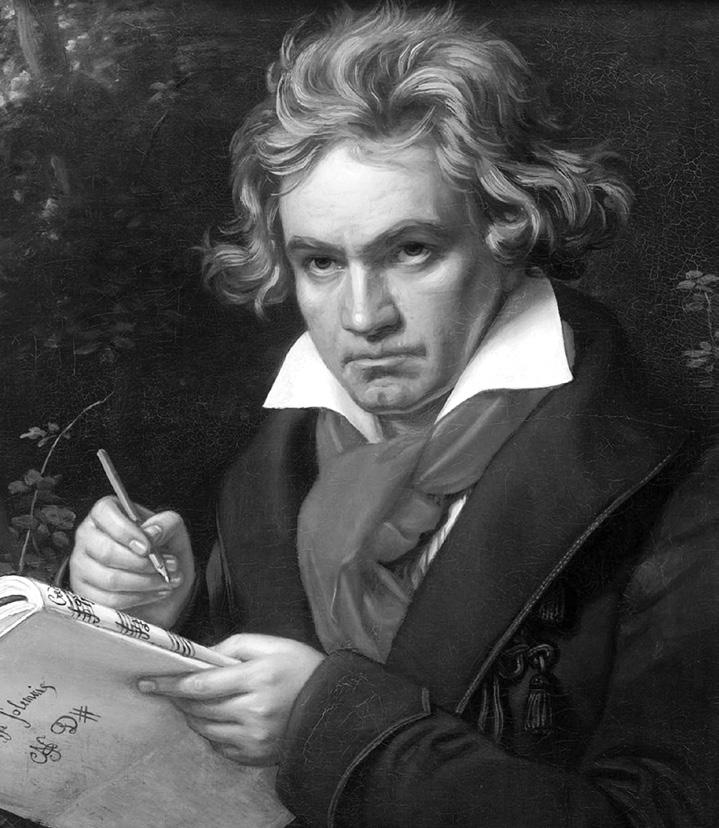
It’s probable that Beethoven felt a sense of sympathy for the figure of Prometheus. After all, this is the composer who wrote, a few years later: ‘Music should strike fire in the heart of man.’ His score for Viganò’s creation – the only full-length ballet score he produced, in fact – is just as thrusting and pioneering as its storyline might suggest.
Beethoven’s brilliant Overture may have served to fill in some of the backstory to Viganò’s scenario. After a summons to attention (beginning on what’s effectively a daring dissonance), it’s not hard to imagine Olympus and its Gods in the imposing grandeur of the piece’s opening, and Prometheus’s dash away with his stolen fire in its gleefully scampering later music.
In the later Adagio section, we’re back on Olympus with Apollo and his followers, and the clay figures begin to come to life. Euterpe (muse of music and lyric poetry)
It’sprobablethat Beethoven felt a sense of sympathyforthefigureof Prometheus.Afterall,this isthecomposerwhowrote, afewyearslater:‘Music should strike fire in the heart of man.’
plays the flute, Amphion (son of Zeus and Antiope) plays the lyre (represented by an orchestral harp), the poet Arion plays the bassoon, and musician extraordinaire Orpheus joins in on the clarinet – before Apollo himself makes a dramatic appearance in a cadenza for solo cello.
You may find the music that Beethoven created for the ballet’s Finale strangely familiar. In fact, the score’s concluding section represents just one use of the theme that he reworked (most famously) in the final movement of his ‘Eroica’ Symphony, but which originated in the seventh of his 12 Contredanses, and also formed the basis of his ‘Eroica’ Variations for piano. As the ballet’s characters enter, paying tribute to Prometheus’s achievements and celebrate his success, that theme forms the basis for a set of variations that drive the ballet ever onward towards its triumphant conclusion.
© David Kettle
Ludwig van BeethovenMOZART (1756-1791)
Concert Aria Vorrei spiegarvi, oh Dio, K418 (1783)
Vorrei spiegarvi, oh Dio! Qual è l'affanno mio; ma mi condanna il fato a piangere e tacer.
Arder non può il mio core per chi vorrebbe amore e fa che cruda io sembri, un barbaro dover.
Ah conte, partite, correte, fuggite
lontano da me; la vostra diletta
Emilia v'aspetta, languir non la fate, è degna d'amor.
Ah stelle spietate! nemiche mi siete. Mi perdo s'ei resta.
Partite, correte, D'amor non parlate, è vostro il suo cor!
Let me explain, oh God, What my grief is!
But fate has condemned me
To weep and stay silent.
My heart may not pine
For the one I would like to love Making me seem hard-hearted And cruel.
Ah, Count, part from me, Run, flee
Far away from me; Your beloved Emilia awaits you, Don't let her languish, She is worthy of love.
Ah, pitiless stars! You are hostile to me. I am lost if he stays.
Part from me, run, Speak not of love, Her heart is yours.
18-19 Apr, 2pm
Edinburgh | Glasgow MATINEE

Joseph Swensen Conductor
André Cebrián Flute
Katherine Bryer Cor Anglais
Featuring music by Maxwell Davies, Nielsen and Sibelius
Supported by
For tickets and more info visit sco.org.uk

Thomas Adès’ rise to international prominence has been a phenomenon. He is now one of the world’s foremost musicians, renowned as both a composer and performer worldwide. From exquisite chamber pieces to stage works, his diverse body of work immediately connects with audiences, and assesses the fundamentals of music afresh.
Born in London in 1971, Thomas Adès studied piano at the Guildhall School of Music & Drama, and read music at King’s College, Cambridge. A prodigious composer, conductor and pianist, Adès was described by the New York Times in 2007 as one of today’s ‘most accomplished overall musicians.’
As a conductor, Adès appears regularly with the Los Angeles Philharmonic, London Symphony Orchestra, Royal Concertgebouw, and Finnish Radio Orchestra. He was the inaugural Artistic Partner with the Boston Symphony Orchestra, with whom he premiered a Concerto for Piano and Orchestra with Kirill Gerstein as soloist in March 2019. Other recent works include Dawn, a chacony for orchestra at any distance (2020), Shanty – over the Sea for strings (2020) and Märchentänze for solo violin and piano/orchestra (2021). Air – Homage to Sibelius for violin and orchestra was premiered at the 2022 Lucerne Festival, where Adès was Composer-in-Residence.
Adès has won numerous awards, including the 2015 Léonie Sonning Music Prize, the Leoš Janáček Award, and the Grawemeyer Award (2000), of which he was the youngest ever recipient. He was awarded a CBE in the 2018 Queen’s Birthday Honours. Adès was Artistic Director of the Aldeburgh Festival from 1999 to 2008 and coaches piano and chamber music at the International Musicians Seminar, Prussia Cove.
For full biography please visit sco.org.uk

The Belgian soprano Emma Posman obtained with "greatest distinction", her Master's degree of Voice at the Royal Conservatory of Ghent, where she studied with the Belgian soprano Hendrickje Van Kerckhove. At the same time she became a member of the MM-ACADEMY of the Royal Opera House La Monnaie, Brussels, which she joined in 2017.
Her particular and hybrid voice makes her feeling equally at home in more than one vocal “Fach”, switching easily from Mozart to belcanto roles but also to the lighter soprano parts from the German romantic repertoire. In no time she made herself a name, as Winner or Laureate of Vocal Competitions in Italy, San Marino and Belgium.
During recent seasons Emma Posman has appeared at several occasions at Belgium's federal opera house, La Monnaie, as Masha and Prelipa in a new production of Tchaikovsky's Queen of spades, as Talus in the world premiere of Solar by Howard Moody and amongst others as Nuova novizia in Suor Angelica a new production of Puccini's Trittico. At the Summer Operafestival of Alden-Biesen she sang Lauretta in Gianni Schicchi
For full biography please visit sco.org.uk

The Scottish Chamber Orchestra (SCO) is one of Scotland’s five National Performing Companies and has been a galvanizing force in Scotland’s music scene since its inception in 1974. The SCO believes that access to world-class music is not a luxury but something that everyone should have the opportunity to participate in, helping individuals and communities everywhere to thrive. Funded by the Scottish Government, City of Edinburgh Council and a community of philanthropic supporters, the SCO has an international reputation for exceptional, idiomatic performances: from mainstream classical music to newly commissioned works, each year its wide-ranging programme of work is presented across the length and breadth of Scotland, overseas and increasingly online.
Equally at home on and off the concert stage, each one of the SCO’s highly talented and creative musicians and staff is passionate about transforming and enhancing lives through the power of music. The SCO’s Creative Learning programme engages people of all ages and backgrounds with a diverse range of projects, concerts, participatory workshops and resources. The SCO’s current five-year Residency in Edinburgh’s Craigmillar builds on the area’s extraordinary history of Community Arts, connecting the local community with a national cultural resource.
An exciting new chapter for the SCO began in September 2019 with the arrival of dynamic young conductor Maxim Emelyanychev as the Orchestra’s Principal Conductor. His tenure has recently been extended until 2028. The SCO and Emelyanychev released their first album together (Linn Records) in November 2019 to widespread critical acclaim. Their second recording together, of Mendelssohn symphonies, was released in November 2023.
The SCO also has long-standing associations with many eminent guest conductors and directors including Andrew Manze, Pekka Kuusisto, François Leleux, Nicola Benedetti, Isabelle van Keulen, Anthony Marwood, Richard Egarr, Mark Wigglesworth, John Storgårds and Conductor Emeritus Joseph Swensen.
The Orchestra’s current Associate Composer is Jay Capperauld. The SCO enjoys close relationships with numerous leading composers and has commissioned around 200 new works, including pieces by the late Sir Peter Maxwell Davies, Sir James MacMillan, Anna Clyne, Sally Beamish, Martin Suckling, Einojuhani Rautavaara, Karin Rehnqvist, Mark-Anthony Turnage and Nico Muhly.

For tickets and more info visit sco.org.uk

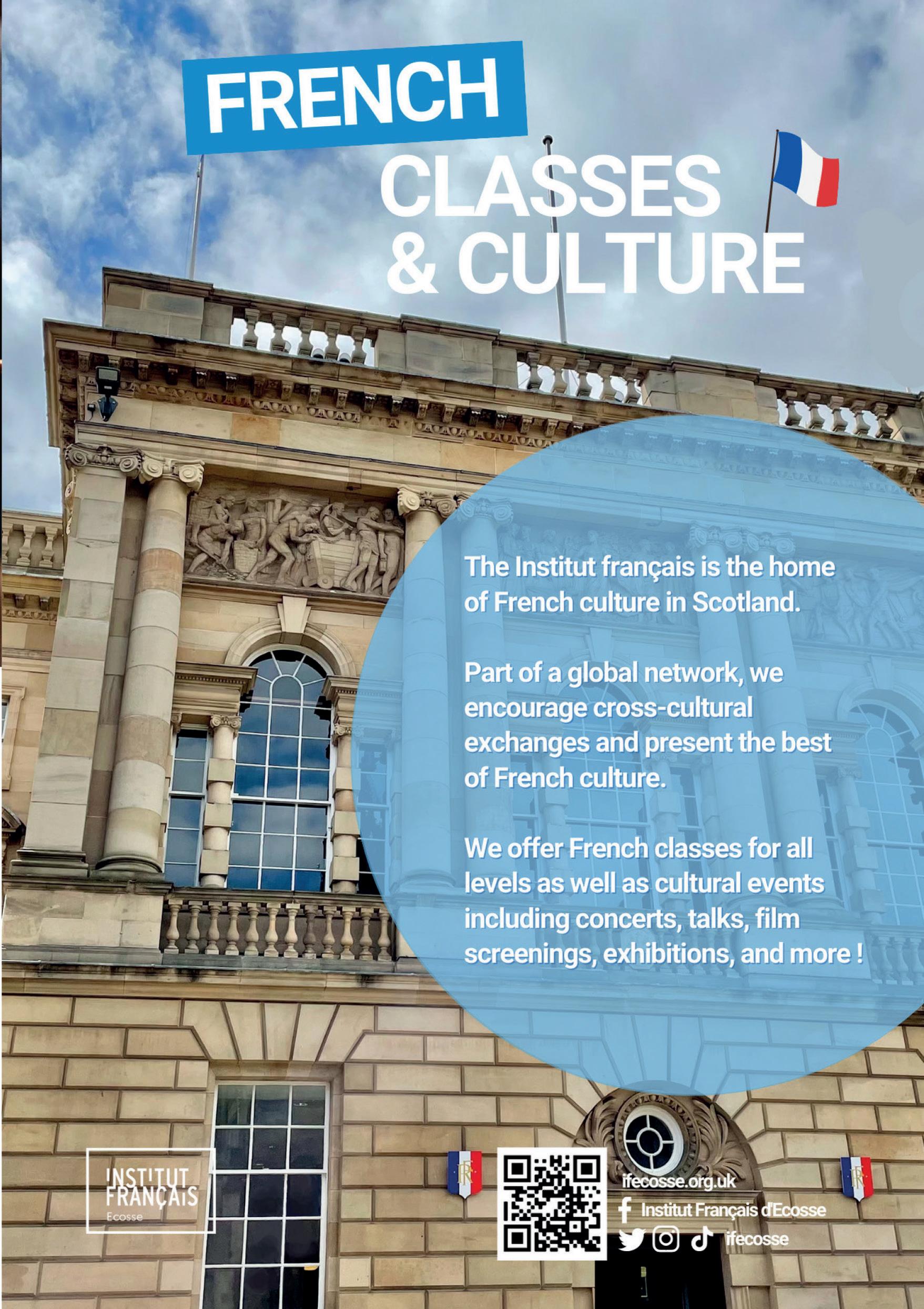




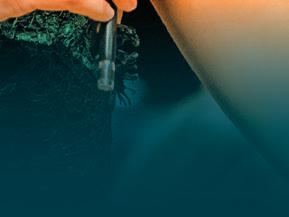

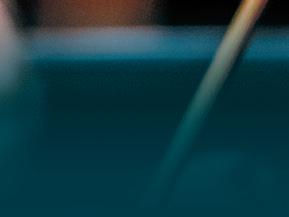






Quilter Cheviot is a proud supporter of the Benedetti Series 2023, in partnership with the Scottish Chamber Orchestra. The extension of our partnership continues to show our commitment in supporting culture and the arts in the communities we operate.
For over 250 years, we have been performing for our clients, building and preserving their wealth. Our Discretionary Portfolio Service comes with a dedicated investment manager and local team who aspire to deliver the highest level of personal service, working with you to achieve your goals.
To find out more about investing with us, please visit www.quiltercheviot.com

For 50 years, the SCO has inspired audiences across Scotland and beyond.
From world-class music-making to pioneering creative learning and community work, we are passionate about transforming lives through the power of music and we could not do it without regular donations from our valued supporters.
If you are passionate about music, and want to contribute to the SCO’s continued success, please consider making a monthly or annual donation today. Each and every contribution is crucial, and your support is truly appreciated.
For more information on how you can become a regular donor, please get in touch with Hannah Wilkinson on 0131 478 8364 or hannah.wilkinson@sco.org.uk
sco.org.uk/support-us